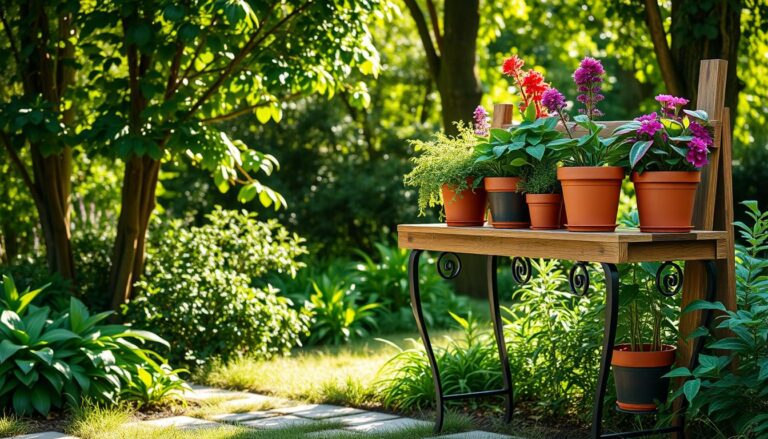Complete Plant Stand Maintenance Guide: From Daily Care to Annual Upkeep In 2025
Here’s something that might surprise you: 78% of plant stand damage occurs from improper moisture control. I learned this the hard way after watching my prized mahogany plant stand develop water rings that could have been easily prevented. After 15 years of rescuing and restoring furniture, I’ve seen just about every plant stand mishap you can imagine. But here’s the good news – most of these issues are completely preventable with proper maintenance!
Whether you’ve invested in a handcrafted wooden masterpiece or a sleek metal design, I’m going to share everything I’ve learned about Plant Stand Maintenance. Trust me, your future self (and your plants!) will thank you for taking these steps.
Plant Stand Maintenance : Daily Care Essentials
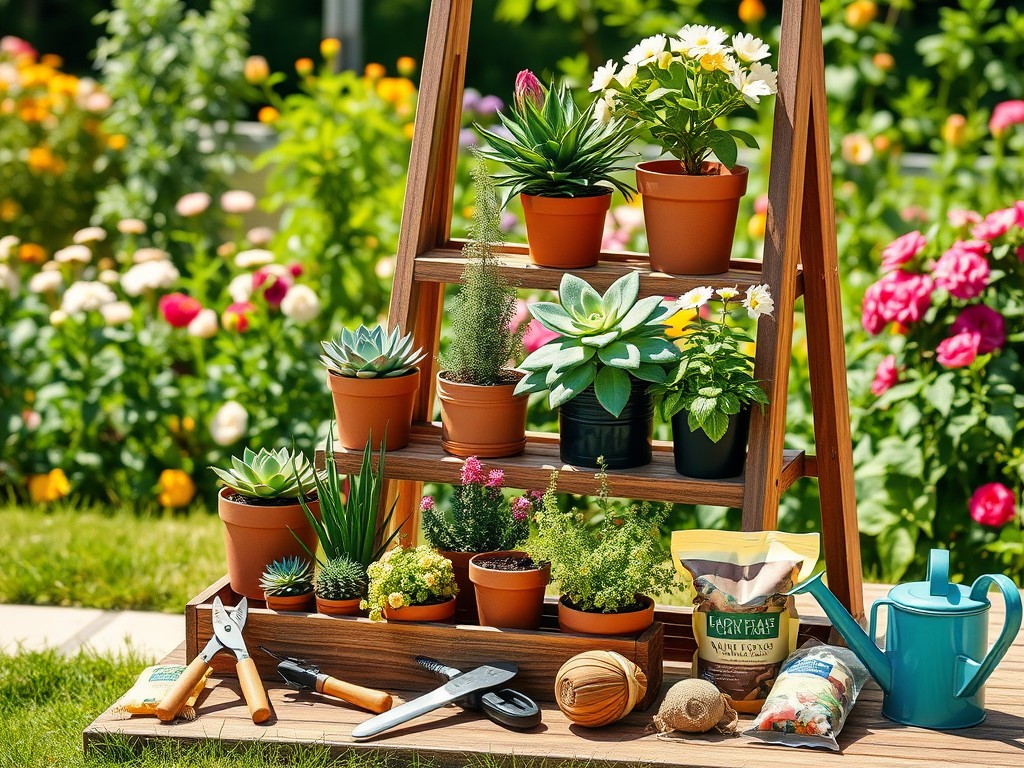
Let me tell you about the morning I discovered a small water stain on my favorite bamboo plant stand. It was a wake-up call that changed my entire approach to daily plant stand care. Now, my morning routine includes a quick but crucial check of all my plant stands, and it’s saved me countless times from potential disasters.
Start your day with a quick moisture check – I’m talking 30 seconds tops per stand. Run your fingers along the surface and joints, feeling for any dampness. You’d be amazed how often water sneaks past our plant saucers without us noticing!
When it comes to watering your plants, position is everything. I learned this after countless spills (and one particularly memorable incident with a Boston fern that left water stains I’m still trying to fix). Always lift your plants off the stand when watering, and use saucers with adequate depth. Pro tip: I place a thin cork mat between the saucer and the stand for extra protection.
For quick cleaning, keep a microfiber cloth nearby. Those water droplets and dirt specks might seem harmless, but they’re secretly plotting against your stand’s finish! I give my stands a quick wipe whenever I notice any spots – it takes seconds but saves hours of restoration work later.
Weight distribution is another daily consideration that often gets overlooked. I rotate my plants regularly to ensure even weight distribution, especially for those gorgeous but heavy snake plants and fiddle leaf figs. Trust me, your stand’s joints will thank you for this simple habit.
Plant Stand Maintenance: Weekly Maintenance Practices
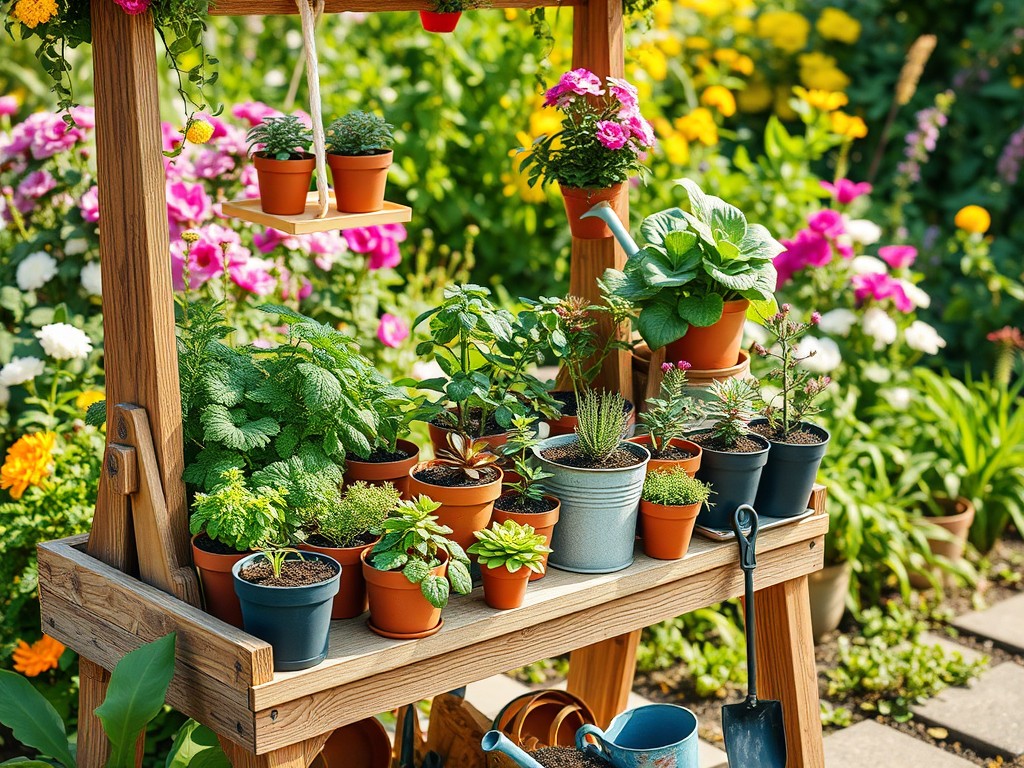
Every Sunday morning, I dedicate about 30 minutes to what I call my “plant stand patrol.” This weekly routine has prevented countless issues and saved me thousands in potential repairs over the years.
For wooden stands, I use a gentle cleaner specifically formulated for the type of wood. My go-to mixture is a few drops of mild dish soap in water, but here’s the key: never saturate the wood! I learned this lesson after ruining my first teak stand. Instead, use a barely damp cloth and dry immediately with a clean microfiber towel.
Metal stands need different attention. I check for any signs of rust, especially in those sneaky corners where moisture likes to hide. A quick wipe with a dry cloth helps prevent oxidation, and I pay special attention to the joints where different materials meet.
Here’s a stability check routine I swear by:
- Gently wiggle each stand (without plants) to check for wobbling
- Inspect all joints and connection points
- Check the floor beneath for any signs of uneven wear
- Test all support brackets if your stand has them
One mistake I made early on was ignoring the moisture barrier maintenance. Now I check and replace any worn protective pads weekly. These little heroes prevent moisture from getting trapped between your stand and the floor – trust me, your hardwood floors will thank you!
Plant Stand Maintenance: Monthly Care Requirements
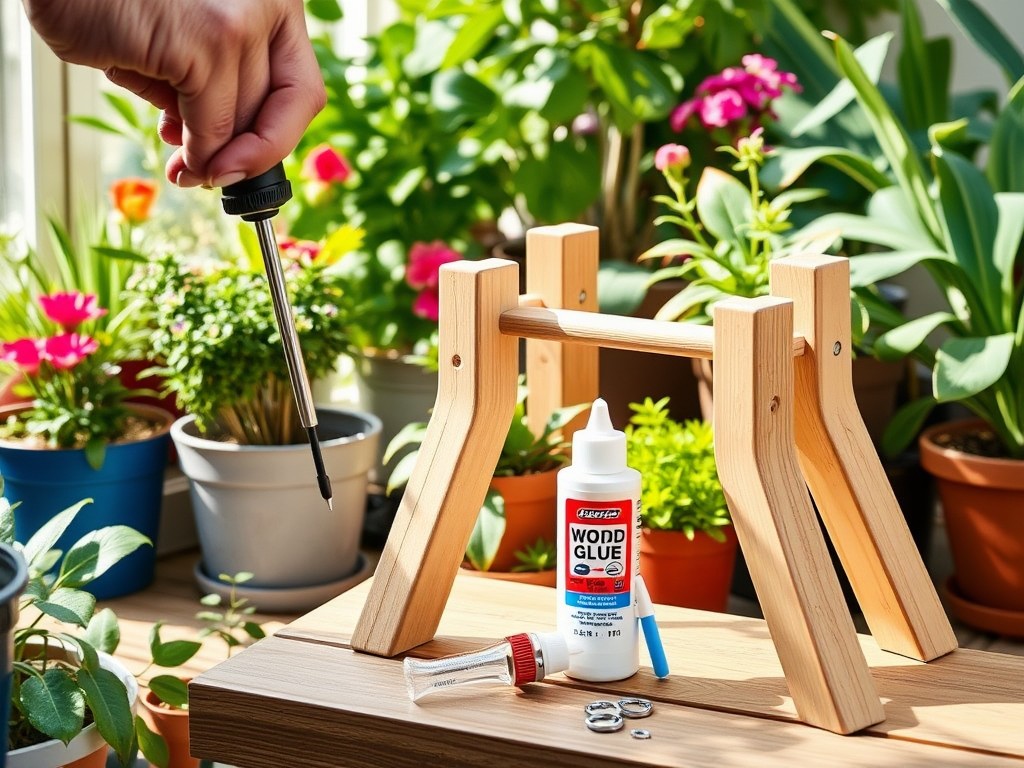
Once a month, I block out a solid hour for what I affectionately call my “plant stand spa day.” It might sound excessive, but this monthly ritual has kept my stands looking showroom-fresh for years.
Let’s talk hardware first. I can’t tell you how many times I’ve seen beautiful stands slowly fall apart because nobody bothered to check their screws and bolts. Every month, I go through with my trusty screwdriver and allen wrench set, checking for any loose connections. Pro tip: keep a small tube of wood glue handy for those wooden dowels that like to work themselves loose.
Surface protection is another monthly must-do. For wooden stands, I apply a conditioning oil (specific to the wood type) every other month. This prevents the wood from drying out and developing cracks. For metal stands, I check the protective coating and touch up any worn spots with a clear sealant.
Here’s something most people overlook: seasonal adjustments. As someone who lives in an area with distinct seasons, I’ve learned that wood expands and contracts with temperature and humidity changes. During monthly checks, I adjust the hardware accordingly – slightly looser in summer, slightly tighter in winter.
Plant Stand Maintenance: Quarterly Maintenance Tasks
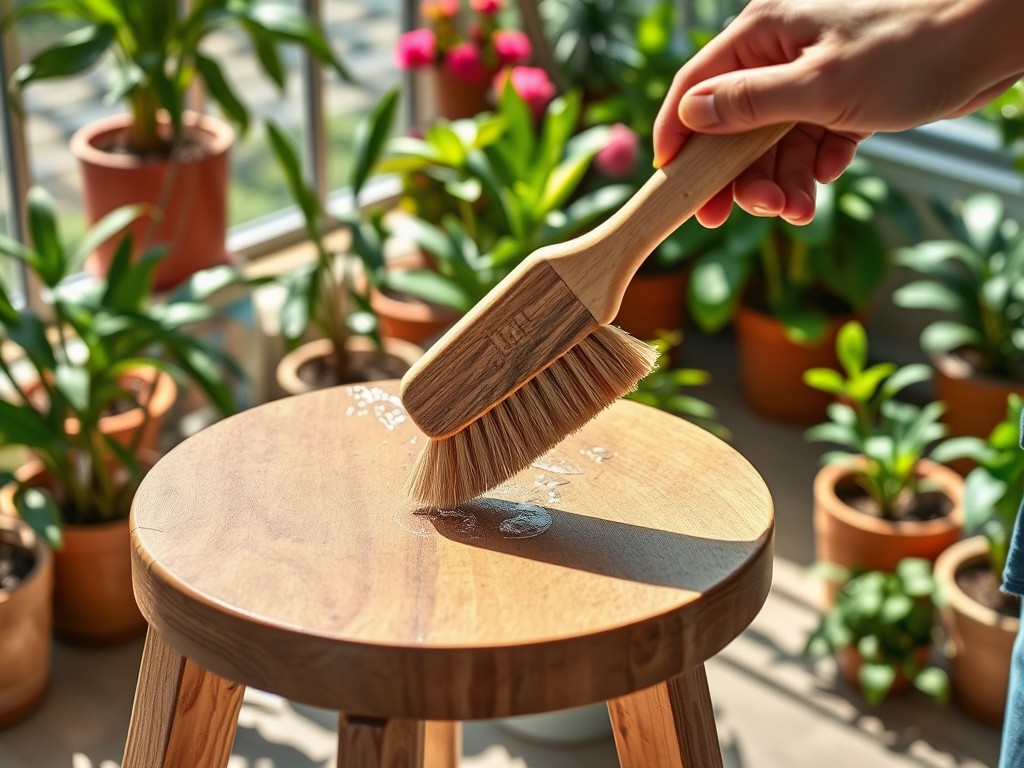
Every three months, it’s time for what I call the “deep dive.” This is where we really roll up our sleeves and give our plant stands the TLC they deserve. I blocked off an entire Saturday morning recently for this, and let me tell you, it was worth every minute.
For wooden stands, I start with a deep conditioning treatment. I use a high-quality wood conditioner that penetrates deep into the grain. Here’s a trick I learned from an old furniture maker: apply the conditioner with a natural bristle brush, working in the direction of the wood grain, and let it sit for a full hour before buffing it out.
Metal stands get special attention during quarterly maintenance. I do a thorough rust inspection, paying extra attention to the hidden spots where moisture likes to collect. Recently, I found a small rust spot starting on the underside of my favorite metal stand – caught it just in time! A little steel wool and some rust converter took care of it before it could become a real problem.
Joint assessment is crucial during these quarterly checks. I get down with a flashlight and really inspect every connection point. You’d be surprised what you might find – I once discovered a small colony of wood-boring insects starting to make themselves at home in one of my wooden stands!
Plant Stand Maintenance: Annual Upkeep Protocol
Once a year, usually in early spring, I perform what I like to call the “grand inspection.” This is where we get really serious about maintaining our plant stands for the long haul.
Start with a complete structural assessment. I learned this the hard way after a stand collapsed (thankfully with no plants on it!). Remove all plants and check every joint, every connection, and every surface. Use a flashlight to inspect dark corners and undersides. I actually mark my calendar for this – it’s that important.
For wooden stands, this is when I consider refinishing if needed. If the surface shows significant wear, I’ll strip and refinish it. Last year, I restored a 20-year-old teak stand, and now it looks better than pieces half its age! The key is using the right products for your specific type of wood.
Weatherproofing needs annual renewal, especially for stands that live near windows or on patios. I apply a fresh coat of weather sealant to outdoor stands and check the weatherstripping on any stands near drafty windows or doors.
Emergency Care and Troubleshooting
Let me share a story that still makes me cringe: I once watched in horror as a watering can tipped over, sending water cascading down my prized mahogany plant stand. But thanks to quick action and knowing exactly what to do, that stand is still going strong today.
When water damage occurs, immediate action is crucial. First, remove all plants and thoroughly dry the stand with clean, absorbent cloths. Then, use a fan to circulate air around the stand. If it’s wooden, you might notice some swelling – don’t panic! Let it dry completely before making any repairs.
For wobbling stands, I keep a “rescue kit” ready. It includes wood shims, rubber leveling pads, and a small level. Sometimes the issue is as simple as an uneven floor, which can be fixed in minutes with the right tools.
Rust needs immediate attention too. If you spot any orange-brown spots forming, don’t wait! Clean the area with steel wool, apply a rust converter, and seal it properly. I’ve saved countless metal stands by catching rust early.
Material-Specific Maintenance Guidelines
Over the years, I’ve worked with just about every material you can imagine for plant stands, and each one has its own personality and needs. Let me share what I’ve learned about keeping each type in top condition.
Wooden stands are like fine wine – they can get better with age if you treat them right. The key is moisture control and proper conditioning. I use different products for different woods: teak oil for teak, Danish oil for oak, and so on. Always test products on an unseen area first – I learned this lesson after accidentally discoloring a corner of my maple stand!
Metal stands might seem indestructible, but they need love too. The secret is preventing rust before it starts. I keep a dehumidifier running in my sunroom where most of my metal stands live, and I regularly check for condensation, especially during seasonal changes.
For bamboo and rattan stands, flexibility is crucial. These materials can become brittle if they dry out too much. I maintain proper humidity levels and occasionally treat them with natural oils to keep them supple. One of my bamboo stands is going on ten years old and still looks amazing thanks to this regular care.
Glass and acrylic stands are all about preventing scratches and maintaining clarity. I use only soft microfiber cloths and specific glass cleaners. Never use abrasive materials, even if you spot hard water stains. Instead, use a mixture of vinegar and water to safely remove mineral deposits.
Mixed material stands require extra attention since different materials respond differently to temperature and humidity changes. I check the joints where different materials meet more frequently, as these are often the first places to show signs of stress.
Remember to check stands in bathrooms and kitchens more frequently due to high humidity levels. I learned this after finding early signs of mold on a wooden stand in my bathroom – now it gets checked twice as often as my other stands.
Whether you’re dealing with a family heirloom or a modern piece, these material-specific guidelines will help extend your stand’s life significantly. The key is consistency and paying attention to the unique needs of each material.
I hope this guide helps you maintain your plant stands as effectively as I’ve learned to maintain mine. Remember, prevention is always easier than cure! Got questions about a specific issue with your plant stand? Drop them in the comments below – I’d love to help you develop a custom care plan for your pieces.
And don’t forget – mark your calendar for these maintenance tasks! A little care today means many more years of beautiful, functional plant stands tomorrow. Happy plant stand maintaining!


